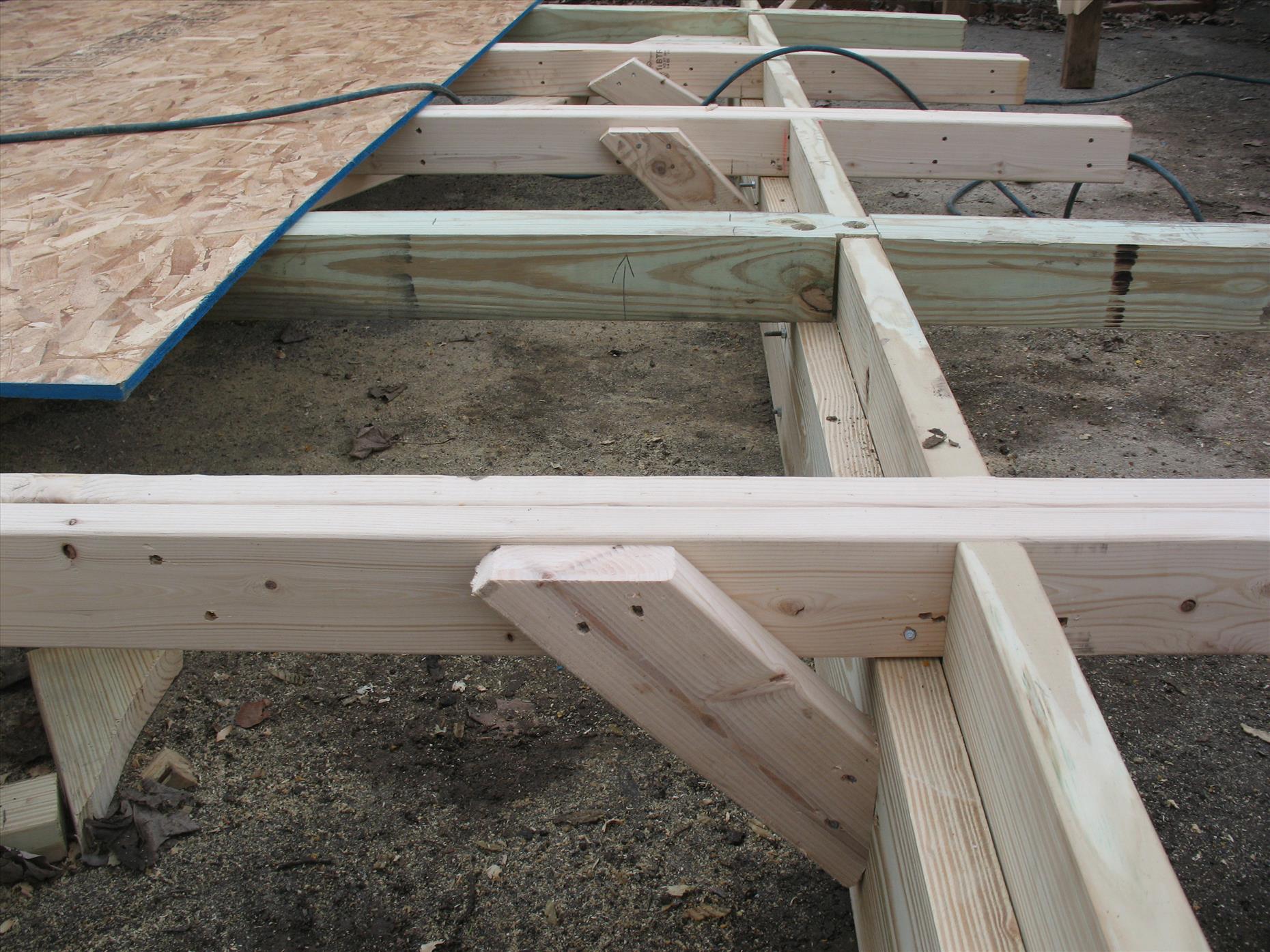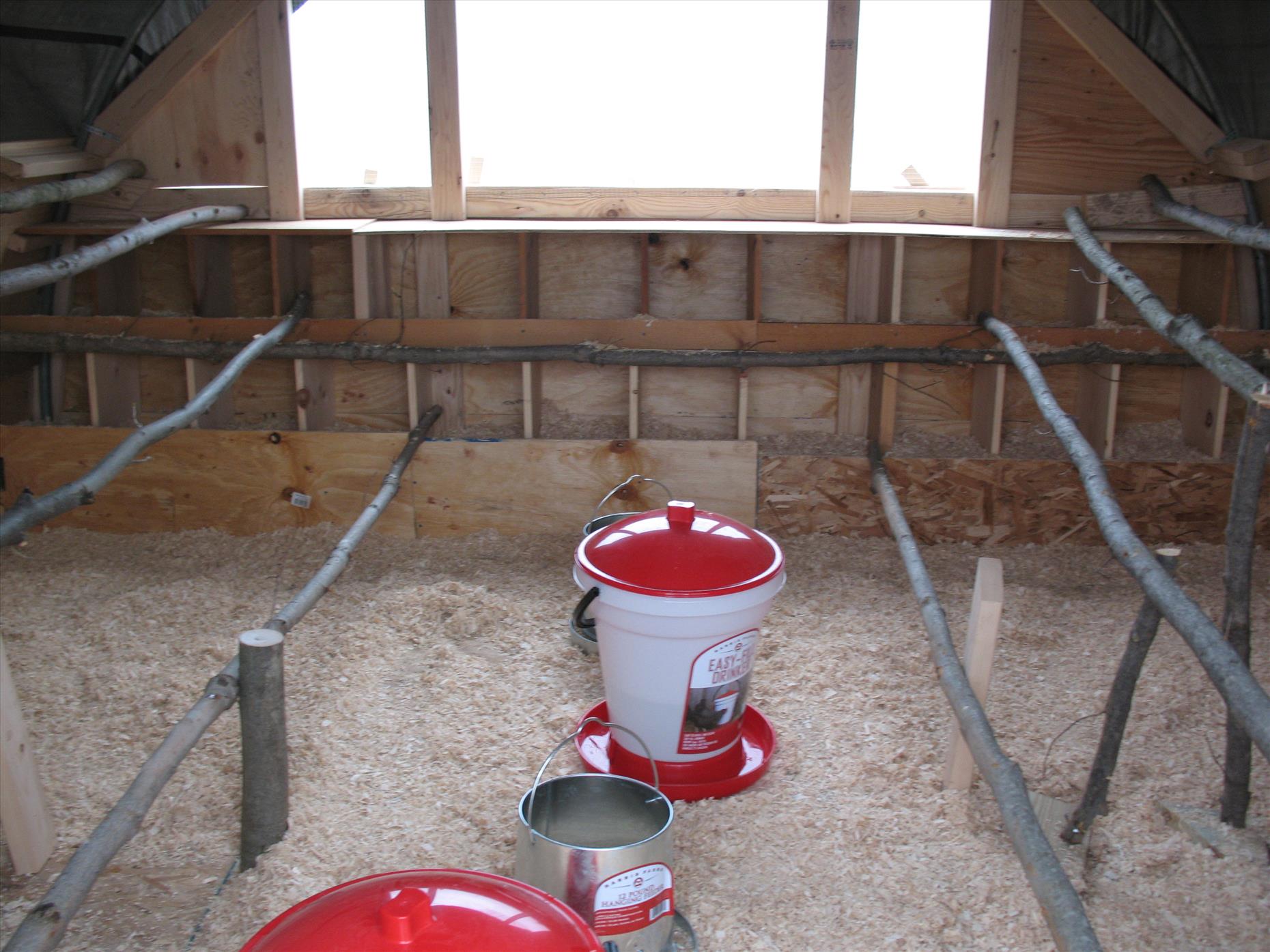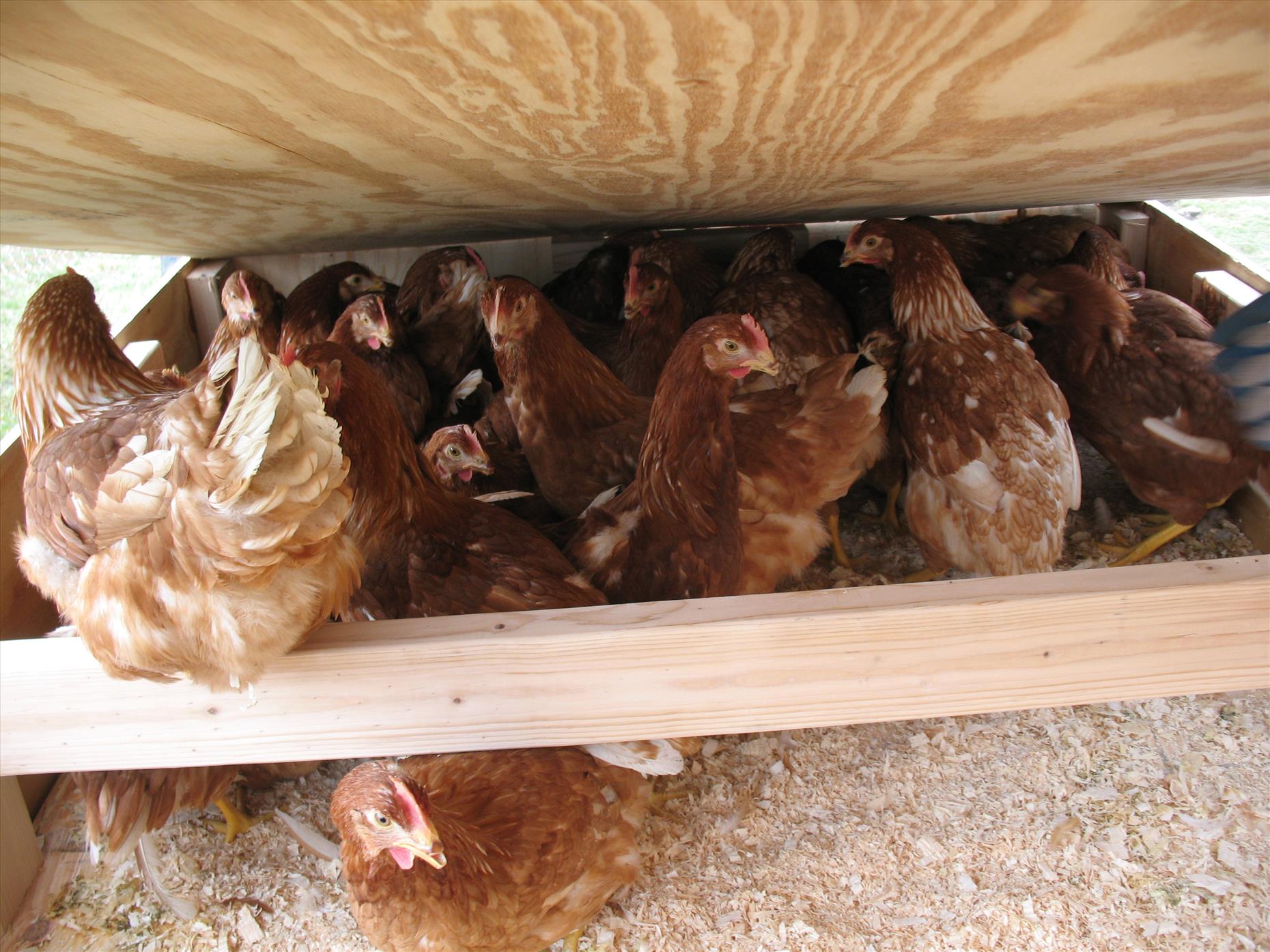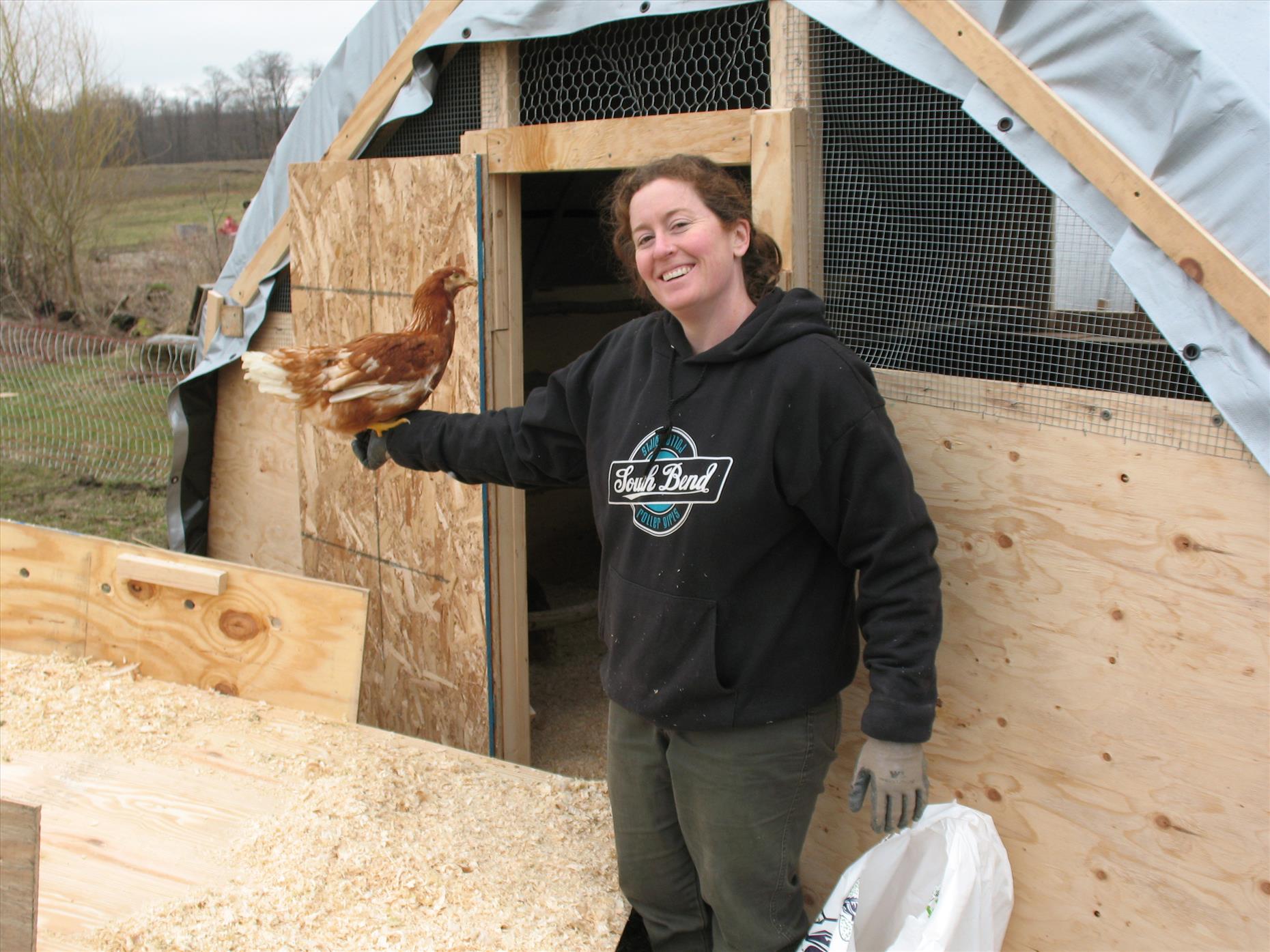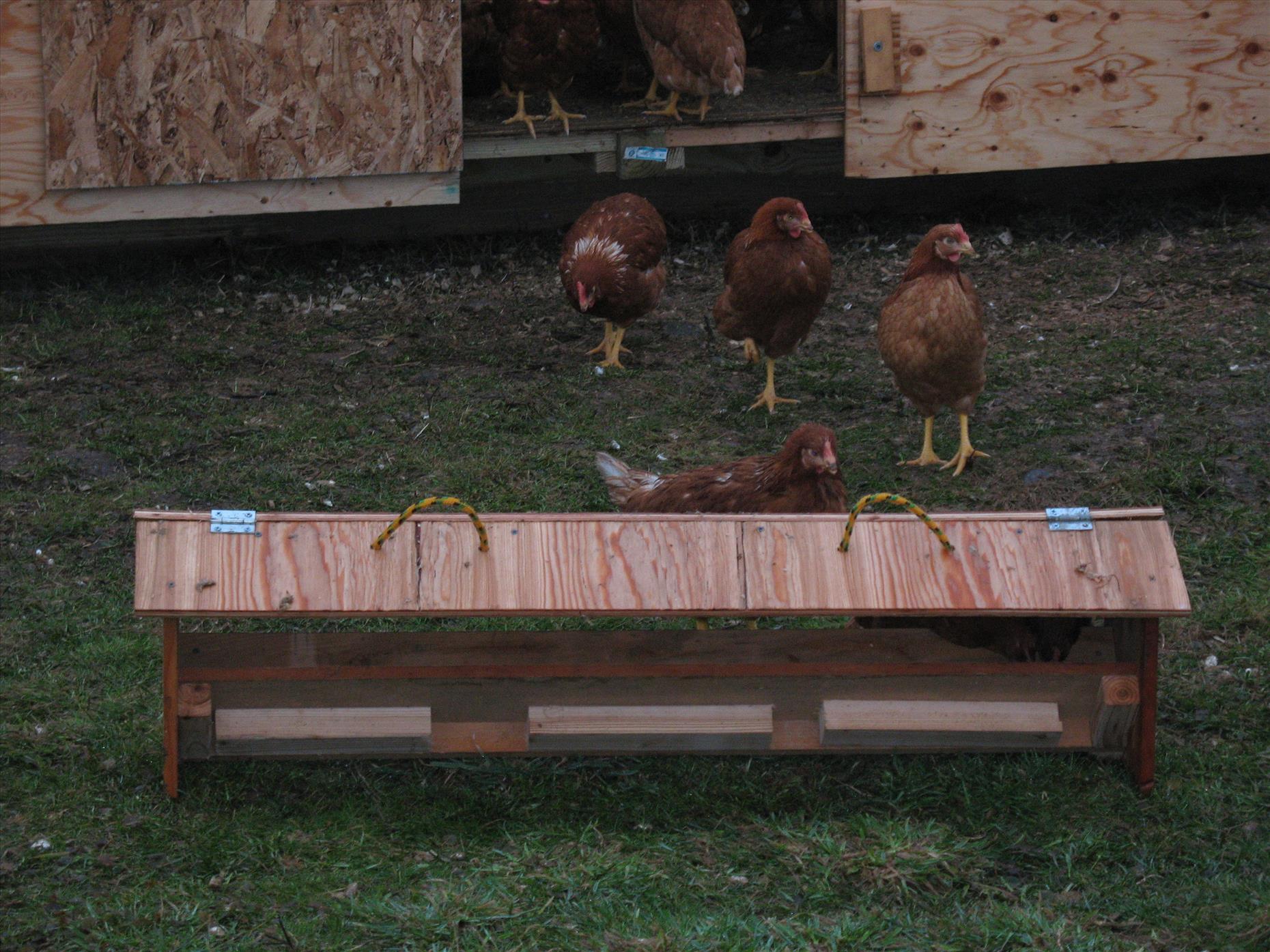Building the Mobile Coop and the Hens Arriving!
/We are excited to have animals on the farm this year! The first arrivals came Tuesday--100 pullets that should start their laying hen careers in the next few weeks. We are pasturing the birds using a mobile coop and flexinet electric netting (which theoretically keeps predators out). This year we went with nearly full grown birds (rather than raising them from chicks) since we don't really have good indoor facilities to brood baby birds in. We plan on getting chicks this upcoming fall to brood over winter for next year's addition to the flock.
Matt's been busy building the coop this past week. We had hoped to use an old hay wagon base, but couldn't find any old bases near us, so we decided to just run it on skids. The skids work fine and it moves easily with our tractor, but we still would like to get our next coop up on wheels.
It's pretty cozy for the number of birds that we have, but we felt like this would work well since it's just a seasonal pasture coop.
We needed it to be heavy enough to be stable in the Fenner wind, but light enough to move around easily. The solid base should anchor it (in combination with some heavy duty anchors for storms), and the greenhouse top has very little weight.
The sides are 3/8" plywood to help deter predators. We based our plan on this great Blackbird Organics design we found online: http://theruminant.ca/2012/03/30/farm-glance-blackbird-organics-mobile-chicken-fortress/ The one change we made was to add the base for better wind resistance and to keep out any digging predators. We've seen fox, coyote, racoons, random dogs, and mink on the farm, so we wanted to protect our hens as much as we can.
Here you can see the boxes before the swinging access doors were added. We have 24 boxes for 100 birds, but can add another row if this seems to be too few. The openings all have 1/2" hardware fabric stapled over them against mink and weasels.
Here's a look at the finished interior. It's mostly just a place for the hens to sleep and lay eggs, since they will be busy outside eating grass most of the day. We shortly moved all these waterers up onto blocks so they stay clean.
This is the transit box Matt built to go get them. We kept it fairly small so that they would be close to each other and not slide around in transit. It worked really well, and the birds seemed fine upon opening--they were snug and warm despite the icky day!
The chickens spent their first afternoon recovering from their busy day in the coop, figuring out things like how to roost and bonding with their new home.
Here's a picture of the completed coop. We used a silver reflective tarp, thinking that would keep things cooler. In this picture, the rain is keeping the hens from venturing out. They've been pretty hilarious in the yard as they learn how to run, eat grass and bugs, and discover their wings.
A few intrepid ladies are venturing out in the rain to check out other food options. We hope the rain will break soon so the grass starts growing faster for them! We should have eggs starting in a couple of weeks, once the layers start getting some spring grass! We'll have more pictures of the hen exploits on our Facebook page (Hartwood Farm).





